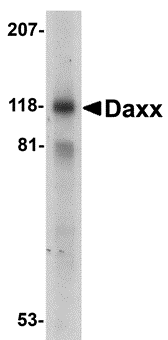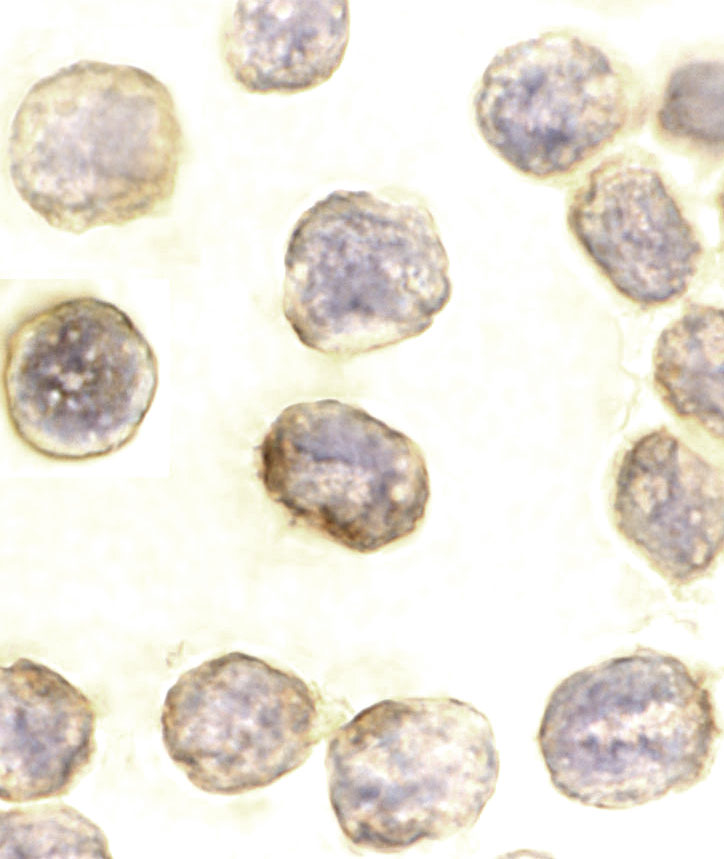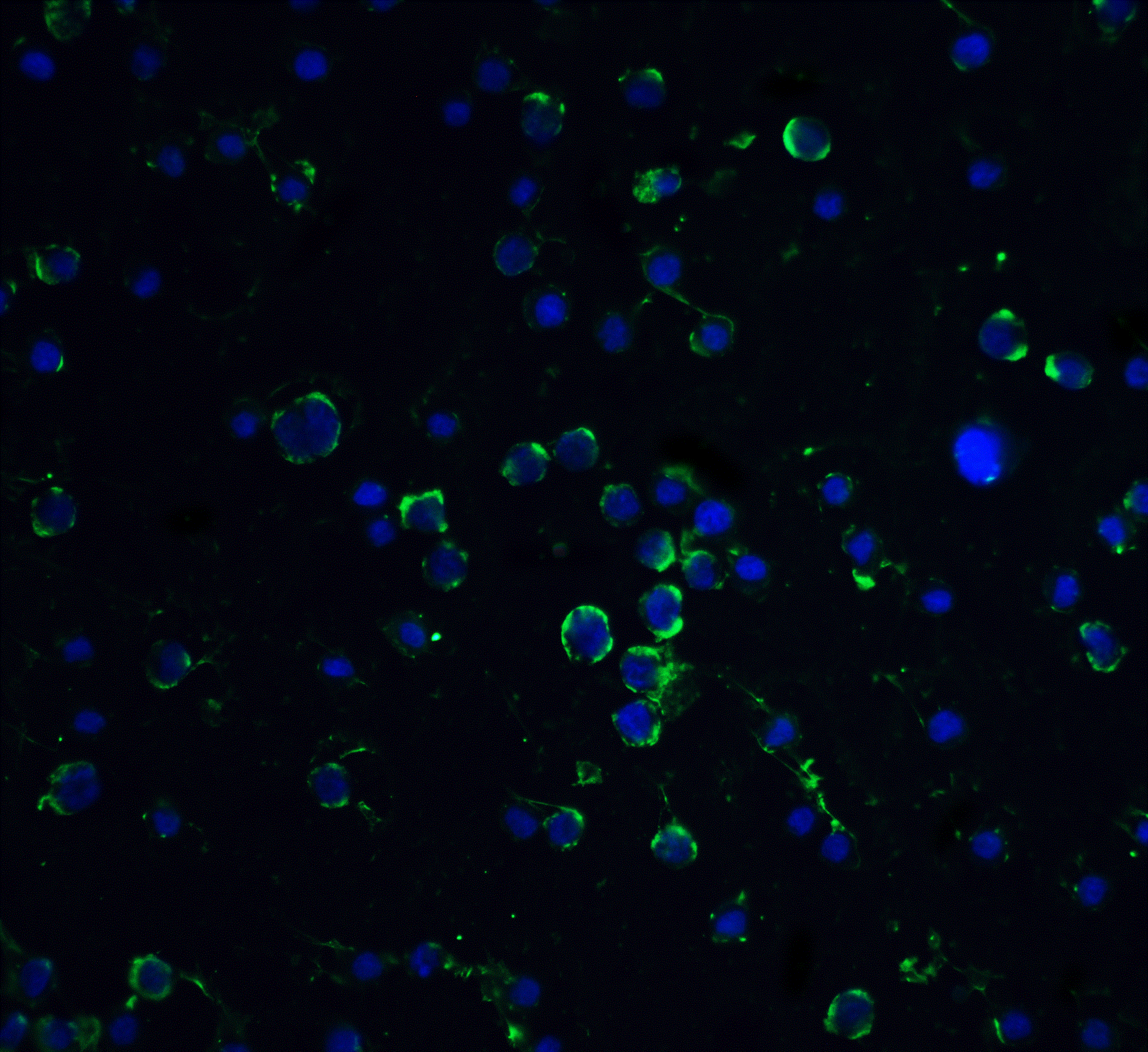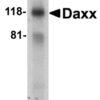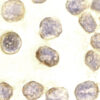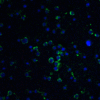Anti-Daxx (CT) Antibody (2411)
$445.00
| Host | Quantity | Applications | Species Reactivity | Data Sheet | |
|---|---|---|---|---|---|
| Rabbit | 100ug | ELISA,WB,IHC-P,IF,IP | Human, Mouse, Monkey |  |
SKU: 2411
Categories: Antibody Products, Apoptosis Antibodies, Products
Overview
Product Name Anti-Daxx (CT) Antibody (2411)
Description Anti-Daxx (CT) Rabbit Polyclonal Antibody
Target Daxx (CT)
Species Reactivity Human, Mouse, Monkey
Applications ELISA,WB,IHC-P,IF,IP
Host Rabbit
Clonality Polyclonal
Isotype IgG
Immunogen Peptide corresponding to aa 722- 740 at the C-terminus of human Daxx (accession no. CAG33366).
Properties
Form Liquid
Concentration Lot Specific
Formulation PBS, pH 7.4.
Buffer Formulation Phosphate Buffered Saline
Buffer pH pH 7.4
Format Purified
Purification Purified by peptide immuno-affinity chromatography
Specificity Information
Specificity This antibody recognizes full-length human, monkey, and mouse Daxx (120kDa).
Target Name Death domain-associated protein 6
Target ID Daxx (CT)
Uniprot ID Q9UER7
Alternative Names Daxx, hDaxx, ETS1-associated protein 1, EAP1, Fas death domain-associated protein
Gene Name DAXX
Gene ID 1616
Accession Number NP_001341
Sequence Location Cytoplasm, Nucleus, nucleoplasm, Nucleus, PML body, Nucleus, nucleolus, Chromosome, centromere
Biological Function Transcription corepressor known to repress transcriptional potential of several sumoylated transcription factors. Down-regulates basal and activated transcription. Its transcription repressor activity is modulated by recruiting it to subnuclear compartments like the nucleolus or PML/POD/ND10 nuclear bodies through interactions with MCSR1 and PML, respectively. Seems to regulate transcription in PML/POD/ND10 nuclear bodies together with PML and may influence TNFRSF6-dependent apoptosis thereby. Inhibits transcriptional activation of PAX3 and ETS1 through direct protein-protein interactions. Modulates PAX5 activity; the function seems to involve CREBBP. Acts as an adapter protein in a MDM2-DAXX-USP7 complex by regulating the RING-finger E3 ligase MDM2 ubiquitination activity. Under non-stress condition, in association with the deubiquitinating USP7, prevents MDM2 self-ubiquitination and enhances the intrinsic E3 ligase activity of MDM2 towards TP53, thereby promoting TP53 ubiquitination and subsequent proteasomal degradation. Upon DNA damage, its association with MDM2 and USP7 is disrupted, resulting in increased MDM2 autoubiquitination and consequently, MDM2 degradation, which leads to TP53 stabilization. Acts as histone chaperone that facilitates deposition of histone H3.3. Acts as targeting component of the chromatin remodeling complex ATRX:DAXX which has ATP-dependent DNA translocase activity and catalyzes the replication-independent deposition of histone H3.3 in pericentric DNA repeats outside S-phase and telomeres, and the in vitro remodeling of H3.3-containing nucleosomes. Does not affect the ATPase activity of ATRX but alleviates its transcription repression activity. Upon neuronal activation associates with regulatory elements of selected immediate early genes where it promotes deposition of histone H3.3 which may be linked to transcriptional induction of these genes. Required for the recruitment of histone H3.3:H4 dimers to PML-nuclear bodies (PML-NBs); the process is independent of ATRX and facilitated by ASF1A; PML-NBs are suggested to function as regulatory sites for the incorporation of newly synthesized histone H3.3 into chromatin. In case of overexpression of centromeric histone variant CENPA (as found in various tumors) is involved in its mislocalization to chromosomes; the ectopic localization involves a heterotypic tetramer containing CENPA, and histones H3.3 and H4 and decreases binding of CTCF to chromatin. Proposed to mediate activation of the JNK pathway and apoptosis via MAP3K5 in response to signaling from TNFRSF6 and TGFBR2. Interaction with HSPB1/HSP27 may prevent interaction with TNFRSF6 and MAP3K5 and block DAXX-mediated apoptosis. In contrast, in lymphoid cells JNC activation and TNFRSF6-mediated apoptosis may not involve DAXX. Shows restriction activity towards human cytomegalovirus (HCMV). Plays a role as a positive regulator of the heat shock transcription factor HSF1 activity during the stress protein response (PubMed:15016915). {PubMed:12140263, PubMed:14990586, PubMed:15016915, PubMed:15364927, PubMed:16845383, PubMed:17081986, PubMed:17942542, PubMed:20504901, PubMed:20651253, PubMed:23222847, PubMed:24200965, PubMed:24530302}.
Research Areas Apoptosis
Background A novel Fas binding protein was recently cloned from human and mouse and designated Daxx. Daxx binds specifically to the Fas death domain, enhances Fas induced apoptosis, and activates the Jun N- terminal kinase (JNK) pathway. Daxx is widely expressed in fetal and adult human and mouse tissues, indicating its important function in Fas signaling pathways.
Application Images




Description Western blot analysis of Daxx in 293 total cell lysate with Dax antibody at 1 mg/mL.

Description Immunocytochemistry of DAXX in HeLa cells with DAXX antibody at 10 ug/mL.

Description Immunofluorescence of Daxx in Hela cells with Daxx antibody at 20 ug/mL.
Green: Daxx Antibody (2411)
Blue: DAPI staining
Blue: DAPI staining
Handling
Storage This antibody is stable for at least one (1) year at -20°C. Avoid multiple freeze-thaw cycles.
Dilution Instructions Dilute in PBS or medium which is identical to that used in the assay system.
Application Instructions Immunoblotting: use at 1:500-1:1,000 dilution.
Immunocytochemistry: use at 10ug/mL.
These are recommended concentrations.
Enduser should determine optimal concentrations for their applications.
Positive control: Whole cell lysate from HeLa cells.
Immunocytochemistry: use at 10ug/mL.
These are recommended concentrations.
Enduser should determine optimal concentrations for their applications.
Positive control: Whole cell lysate from HeLa cells.
References & Data Sheet
Data Sheet  Download PDF Data Sheet
Download PDF Data Sheet
 Download PDF Data Sheet
Download PDF Data Sheet

